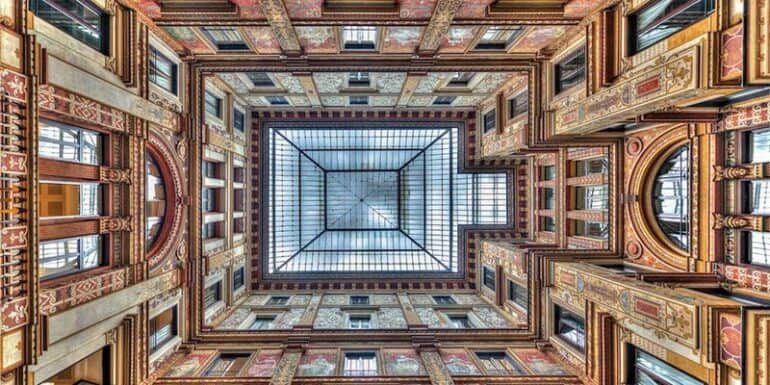10 museums in Roma with free admission
For art and history lovers on a smaller budget, here are some wonderful options available to get your cultural fix in and around the city without spending any money! What could be better? From museums situated along the Appian Way, or in central locations such as near the Trevi Fountain or Piazza del Popolo– they are free (ingresso gratuito), easily accessible and straightforward to travel to. We have selected 9 museums in Rome which can offer you free entry – find out more below.
Villa di Massenzio
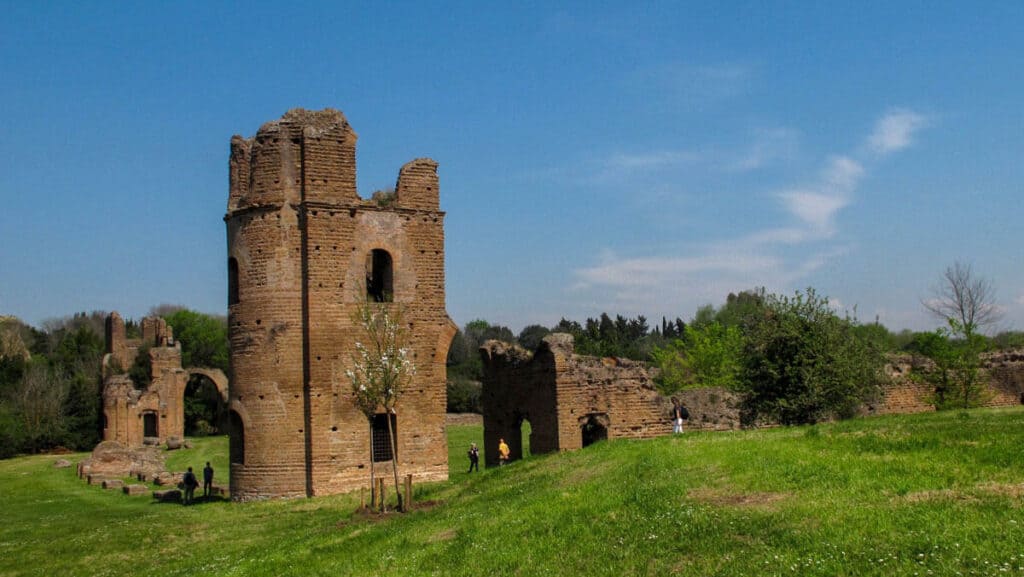
In the south of Rome, situated alongside the Appian Way, is Villa di Massenzio – which offers visitors the chance to see a spectacular ancient running track built in the 4th century. Take a long leisurely stroll in this complex, as this outdoor museum is huge, with vast stretches of wildflowers to admire – which is particularly appealing to visit and walk around during the spring and summer months. Please note that the villa on the hill is currently closed for research purposes but the rest of the site can be explored!
More info: Via Appia, 153 – www.villadimassenzio.it
Museo delle Mura

At the beginning of the Appian Way, is the ‘museum of the walls’ situated in the Porta San Sebastiano building. You can learn about how the walls in Rome were built; as the Ancient Romans used impressive techniques many centuries ago that we still can learn from today. This small but very well informed and thoughtfully laid out museum offers you the chance to go inside a well preserved part of the Aurelian wall and step into Roman history.
More info: Via di San Sebastiano, 18 – www.museodellemuraroma.it
INSPIRATION
The Ultimate Guide To The Must See Museums In Rome
Accademia Nazionale di San Luca
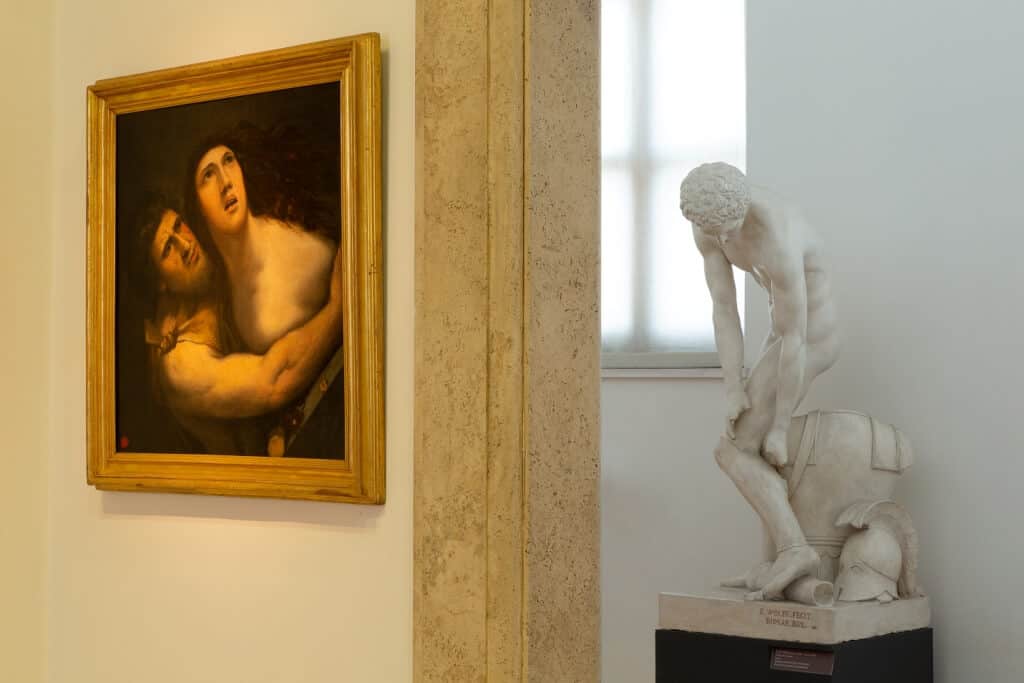
Only 1 minute from the Trevi fountain, is Accademia di San Luca which is an artists’ association founded in 1577 that is still active to this day and allows visitors to stop by and take a peek into their enchanting space. During the eighteenth century this prestigious academy obtained international recognition and continues to follow traditions such as promoting various cultural activities – aimed at enhancing the fine arts. Thus many exhibitions are held here and visitors can admire the various collections of drawings, paintings and sculptures. The academic site is also used for the presentation of books and for the holding of conferences. The Academy likes to support young artists and scholars by giving awards and scholarships. They also publish a yearbook and a bi-annual newsletter that summarizes their most recent or upcoming activities.
More info: Piazza dell’Accademia di San Luca, 77 – www.accademiasanluca.it
Museo Hendrik Christian Andersen
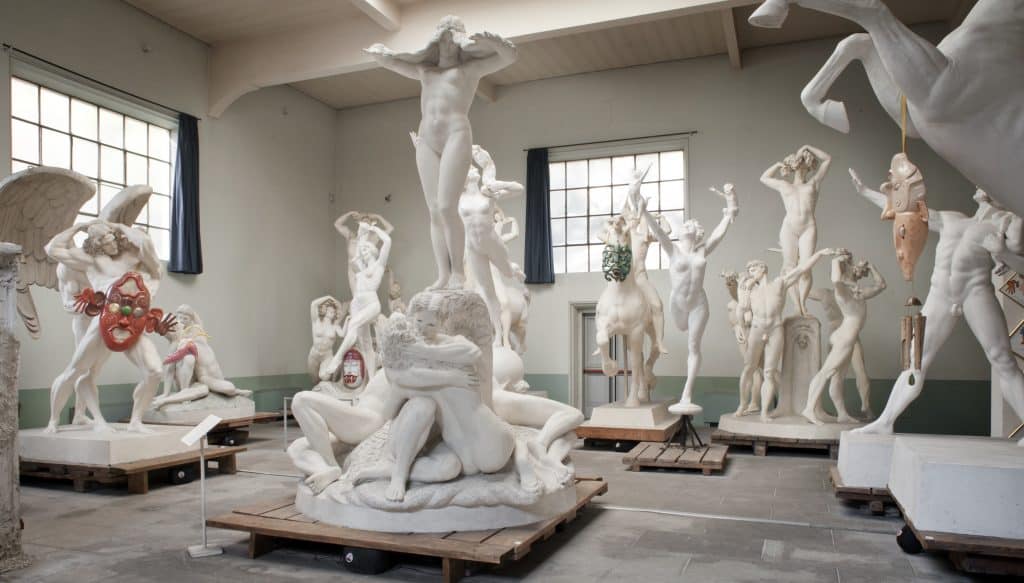
This hidden gem is a short walk (10 minutes approximately) from Piazza del Popolo. In a bubble gum pink palazzo, it was formerly the home and creative studio of Hendrik Christian Andersen, a Norwegian-American sculptor who came to Rome in 1893 and stayed for the rest of his life. Andersen collected Neo-classical sculptures that were left to the Italian Government when he died. Peruse the various muscular statues, portraits, his own paintings and several works in bronze. The rooms are pretty much untouched and identical to how Andersen would have been living in them. Don’t forget to admire the impressive chandelier upstairs and as with most museums in Rome, there are some impressively grand ceilings. It is one of the lesser-known museums but always seems to rack up 5-star reviews from the visitors who do take the time to step through Andersen’s doors.
More info: Via Pasquale Stanislao Mancini, 20
Museo Carlo Bilotti – Aranciera di Villa Borghese
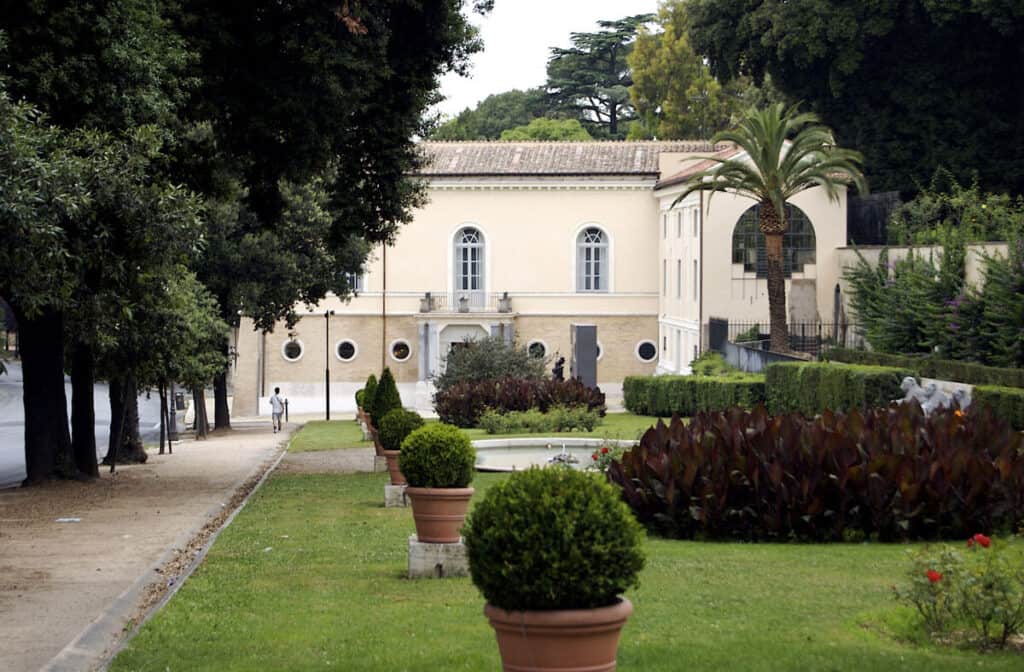
The Aranciera (Orangery) situated in Villa Borghese and a very short walk from Flaminio metro, is where you can discover the Carlo Bilotti Museum, a permanent collection that consists of various artistic works by Giorgio de Chirico, Larry Rivers, Gino Severini, Giacomo Manzù and Andy Warhol. The Orangery also hosts temporary exhibitions and events on the ground floor, so you may also be lucky enough to see some temporary work too. The garden walls and plants around the orangery can also be admired by garden enthusiasts; definitely worth stopping by at this quiet space after a morning of strolling through the city centre.
More info: Museo Carlo Bilotti, Viale Fiorello La Guardia – www.museocarlobilotti.it
INSPIRATION
Top Things to Do in Rome’s most famous park Villa Borghese
La Vaccheria

In the 1930s-made EUR district, specifically in what was the countryside and is now the liminal space between the urban and the rural, an old cow farm has been transformed into a thriving and inclusive cultural space. After ten years and an investment of over 3 million euros, La Vaccheria (literally meaning ‘cow farm’) has opened its doors to the public. The site hosts ruins recovered in the excavation area south of Rome, along with cycles of contemporary art exhibitions. In addition to the exhibition space, the centre also has dining areas, a bookshop, a conference room, offices and art laboratories.
More info: Via Giovanni l’Eltore, 35 – turismoroma.it/it/luoghi/la-vaccheria
Museo Napoleonico & Museo Mario Praz
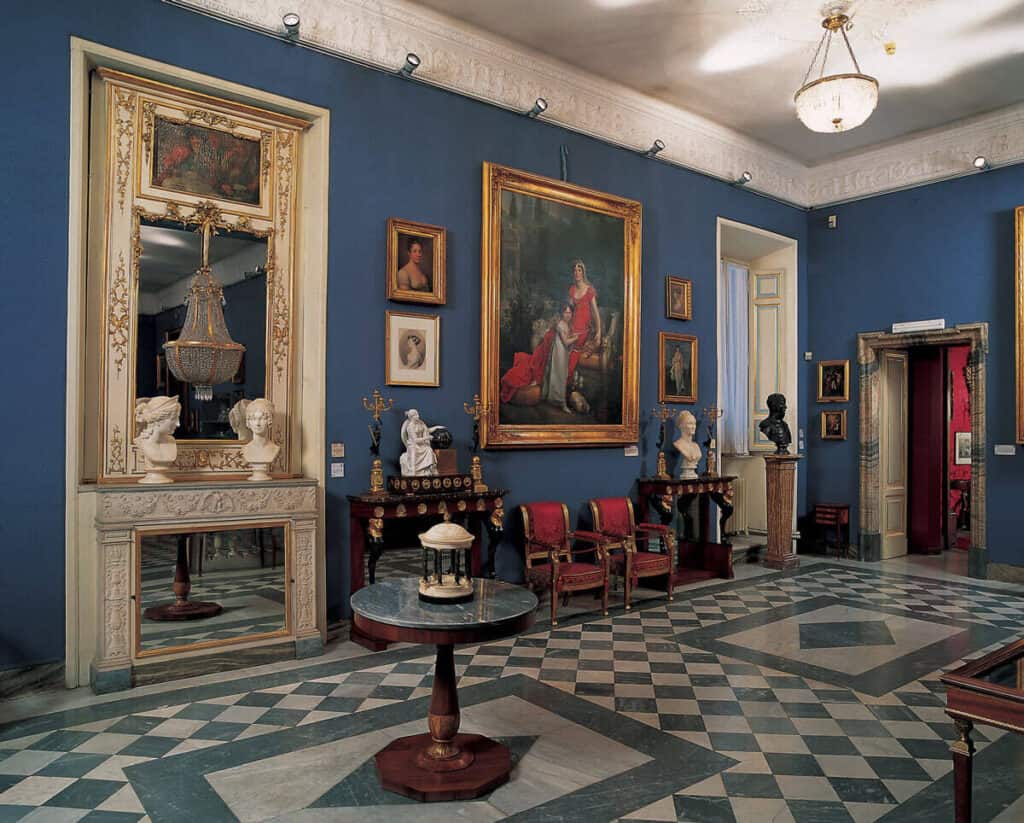
This museum is a shrine to the days when Napoleone Bonaparte aspired to build a new European empire. Much of his family lived in this building, overlooking Piazza Venezia, for about 4 generations and the many portraits and paintings give a real sense of what the Bonaparte family were like. Soak up the rich history and stories in this museum which offers in depth narratives and clear information (in English) about Napoleon’s epic years.
Additionally on the third floor of the same building, is the charming little museum of Mario Praz (entry from Via Zanardelli, 1) who was an intriguing scholar and explorer of Europe who collected paintings, sculptures and furniture over his lifetime. His bohemian collections consist of pieces from Germany, France, Russia and Italy.
More info: Piazza di Ponte Umberto I, 1 – www.museonapoleonico.it
INSPIRATION
Top museums in Rome
The National Museum of Musical Instruments
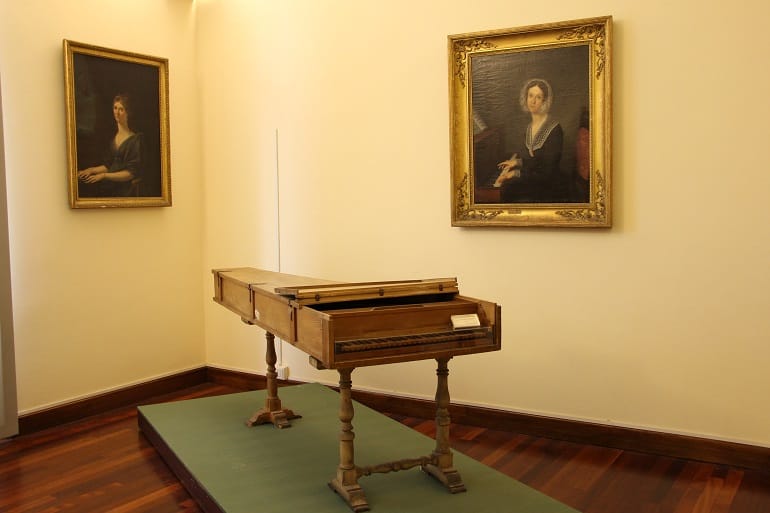
While this museum isn’t strictly free at the moment, the entry ticket is €5, and it’s definitely worth seeing! For any music lover who comes to Rome, you must visit this quirky little museum of musical instruments and ponder over their collection of over 3000 instruments kept in pristine condition under the care of experts. Look out for the ornate harp that was once owned by the Barberini family and the piano decorated in gold. One of the outstanding masterpieces that await you inside is one of the rare surviving pianos built by Bartolomeo Cristofori. There are only three of Cristofori’s pianos left in the world.
More info: Piazza Santa Croce in Gerusalemme, 9/a – museostrumentimusicali.beniculturali.it
Giovanni Barracco – Museum of Ancient Sculptures
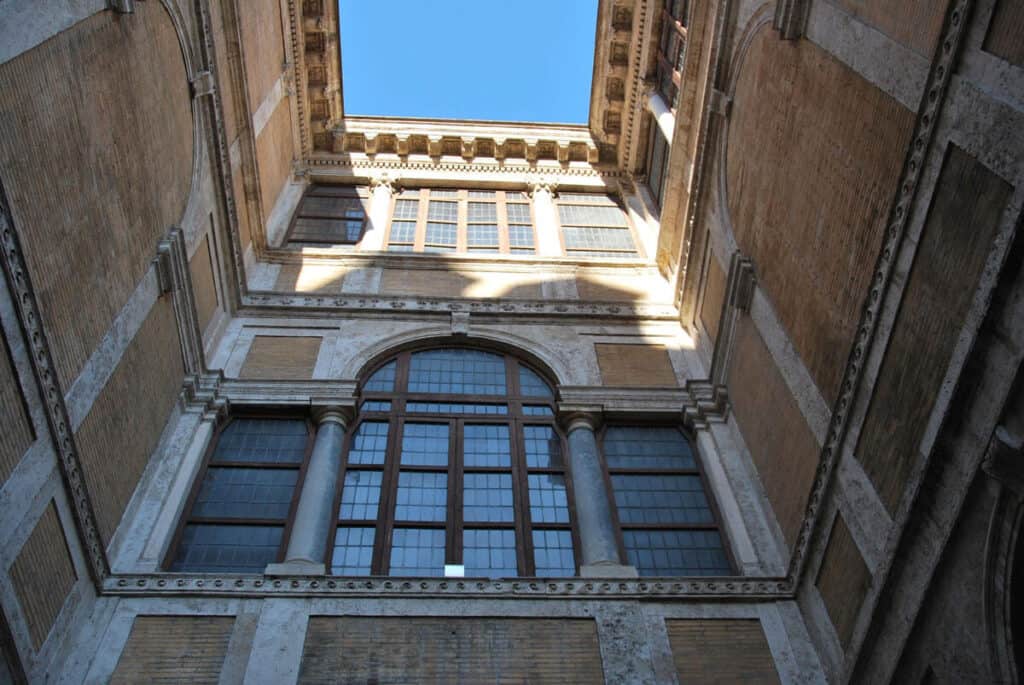
Giovanni Barracco was from a noble family and owned vast amounts of land and were connected with politics and high society. This museum contains many of the Barracco collections and transports visitors into scenes of impressive marble sculptures. There is lots to see! This museum is also a great spot for sketching, figures especially.
More info: Corso Vittorio Emanuele, 166/A – www.museobarracco.it
Galleria Sciarra
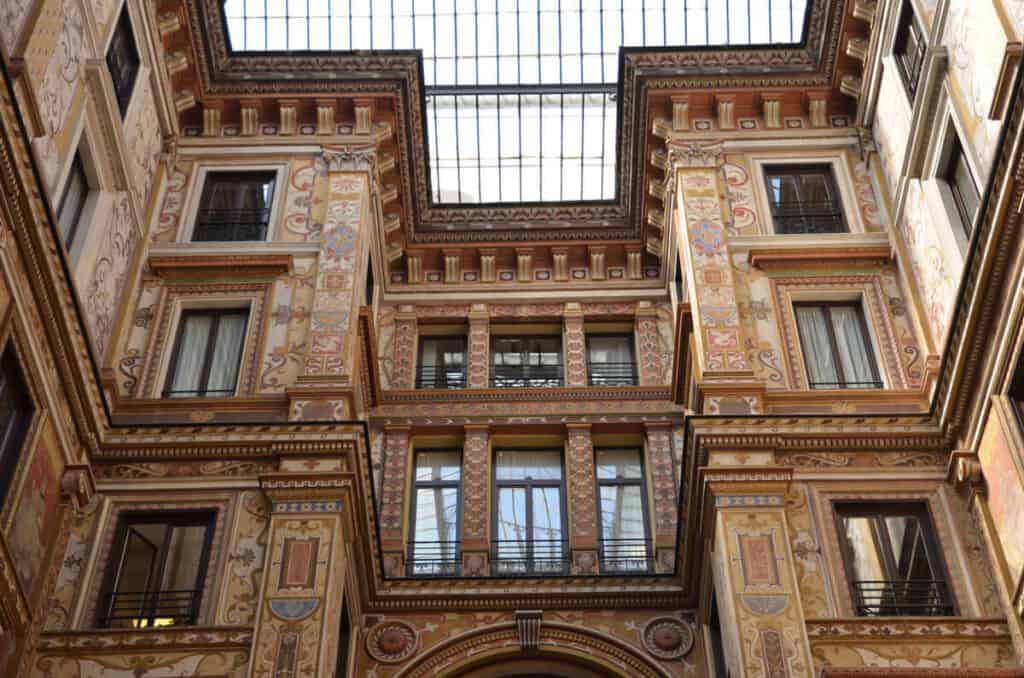
Galleria Sciarra isn’t truly a museum, more like an indoor passageway located on Corso Vittorio Emanuele just behind Piazza Navona. It’s free admission and anyone can walk in and admire the stunning Liberty decorations on the walls and the glorious marble floor whose colors are heightened by the light coming through the glass ceiling. The Galleria was built in the 1880s as part of Palazzo Colonna Sciarra. The theme of the paintings is the glorification of women, depicting the personification of women’s virtues as well as daily scenes in the life of an 1880s bourgeois woman. Definitely worth a walk-in on your way to Piazza Navona!
More info: Via Marco Minghetti, 10 – turismoroma.it


